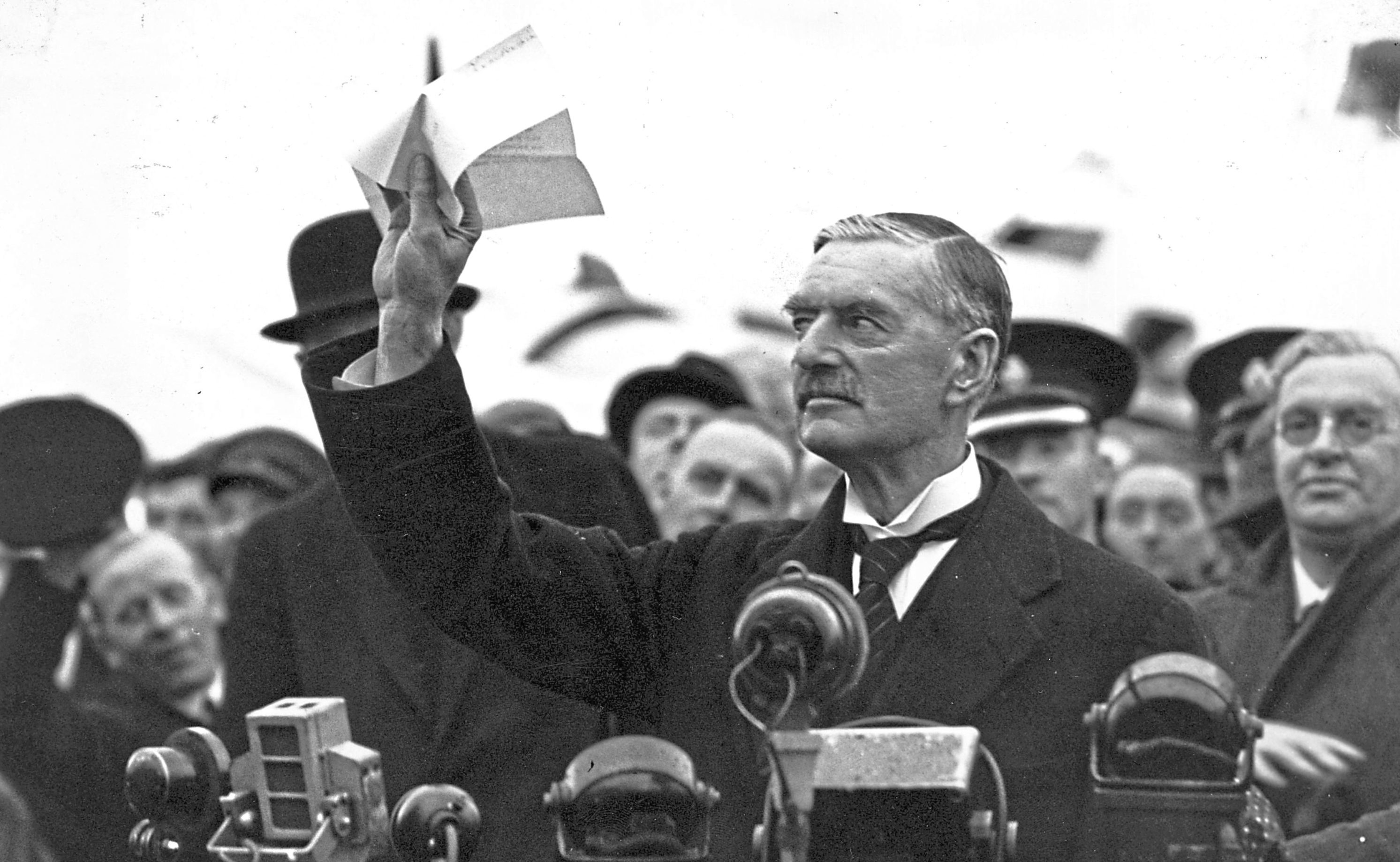
PRIME Minister Neville Chamberlain boasted of “Peace for our time” after signing a non-aggression pact with Germany 80 years ago.
He was hailed as bringing peace to Europe after arriving back in Britain holding an agreement, signed by Adolf Hitler, which stated the Third Reich’s leader’s desire never to go to war with Britain again.
Hitler wrote: “We are determined to continue our efforts to remove possible sources of difference and thus to contribute to assure the peace of Europe.”
But Chamberlain’s much-heralded agreement wasn’t worth the paper it was written on, as the peace didn’t even last a year before Europe was plunged back into war, barely two decades after the guns had fallen silent at the end of the First World War.
The Fuhrer had no intention of sticking to the promises he’d made, referring to the agreement as “just a scrap of paper” as he invaded Poland in September 1939, forcing Britain and France to declare war.
There were, in fact, two pieces of paper including the infamous one Chamberlain brandished before the cameras and a jubilant crowd as he landed at Heston Airfield from Munich on September 30 the previous year.
That was a personal pact between him and Hitler, signed by both men.
The more important one was the Munich Agreement, signed in the city after Britain, Germany, France and Italy had convened to decide the future of Czechoslovakia’s Sudetenland.
This was the newly coined name for portions of Czech territory along Germany’s borders mainly inhabited by German speakers.
Czechoslovakia wasn’t even invited to the conference at which it was decided to allow Germany to occupy the Sudetenland, despite the fact it was of strategic importance to the country as it contained most of its defences.
The agreement was signed in the early hours of September 30, but was dated the day before.
Chamberlain’s policy of “appeasement” towards Germany in the 1930s was always controversial.
Winston Churchill was firmly opposed, as he sought to find a peaceful solution to Hitler’s desire to create an enlarged German homeland.But at the time many Britons were terrified at the thought of another conflict, and the Munich talks were held against a background that had seen the Royal Navy mobilised just days previously due to German sabre-rattling.
While Chamberlain was feted as a hero on his return, things quickly soured for him and Europe.
He was forced to resign as Prime Minister in May 1940 and died just six months later, with his reputation in tatters.

Enjoy the convenience of having The Sunday Post delivered as a digital ePaper straight to your smartphone, tablet or computer.
Subscribe for only £5.49 a month and enjoy all the benefits of the printed paper as a digital replica.
Subscribe